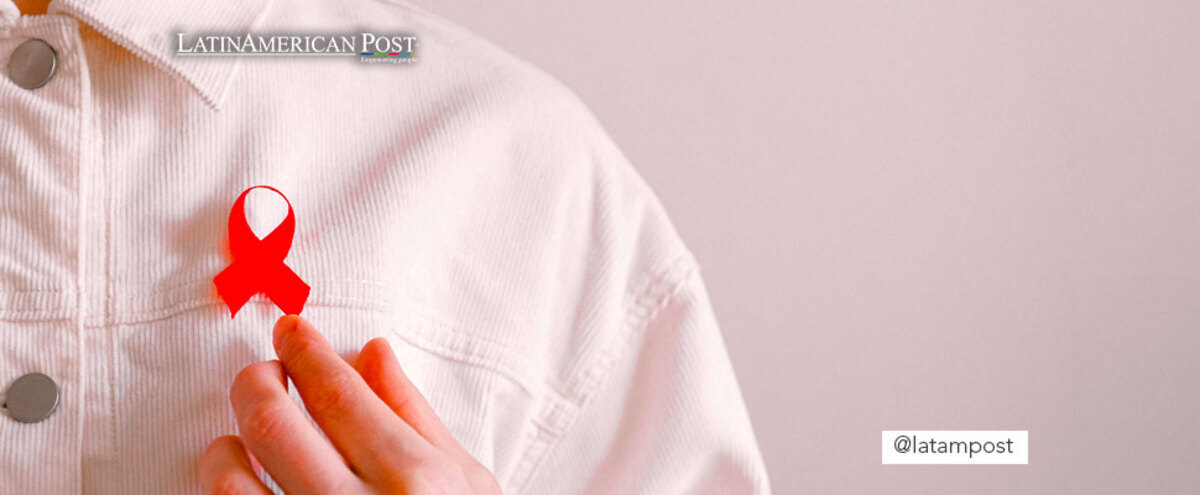The Fight Against HIV AIDS Has Achievements, but Also Setbacks And Dangers
Recently, there has been good news in the fight against the human immunodeficiency virus (HIV). We tell you about its current situation in the world and about some research and evidence that sheds hope around the cure

Photo: Pexels
LatinAmerican Post | María Fernanda Ramírez Ramos
Listen to this article
Leer en español: La lucha contra el VIH SIDA tiene avances, pero también retrocesos y peligros
According to UN AIDS, it is estimated that around 38.4 million people were living with AIDS in 2021. It is estimated that 1.5 million were infected that same year and that nearly 650,000 died from causes related to this disease.
New data from this organization indicates that in recent years of COVID-19, and other crises, progress against the HIV pandemic has slowed. For this reason, the new report from this body is entitled "Endangered" and talks about the threat posed by the reduction of resources and inequality. This report was launched as a preamble to the International AIDS Conference that took place in Canada from July 29 to August 2.
"The number of new infections globally fell by just 3.6% between 2020 and 2021, the smallest annual decline in numbers of new HIV infections since 2016. Eastern Europe and Central Asia, the Middle East, North Africa and Latin America have experienced an increase in annual HIV infections for several years," says a UN AIDS statement.
Likewise, the organization indicates that in 2021 there was a new infection every two minutes in the population group of young women and adolescents. Factors such as gender-based violence, abuse, the interruption of health services and the closure of schools during the COVID-19 pandemic were influential. In addition, it indicates that " In 2021, the AIDS pandemic claimed, on average, one life every minute" , despite the fact that it is a preventable disease and, if detected in time, treatable with antiretrovirals.
Hopes for a cure for HIV
Despite the warning scenario that the UN AIDS raises about this pandemic, several investigations, experiments and treatments have also emerged that give hope in the face of a possible cure, vaccine or better treatment for this disease. However, these advances will not yet be decisive in the fight against the disease, as more research is needed and some are extraordinary cases, not possible to replicate massively.
A woman in Barcelona has been controlling the disease for 15 years without treatment:
A group of doctors from the Hospital Clínic de Barcelona has led a study with a patient who has been controlling the virus without medication for more than 15 years, after completing her initial treatment. It is a unique chaos in which a person manages to control HIV after many years of finishing treatment and without doing boosters. Researchers have found that NK and Gamma Delta cells have played a key role and are studying how to enhance them in other patients.
Also read: Everything You Need To Know About The Nasal COVID-19 Vaccine
A man was cured in the United States:
This is a 66-year-old patient who had been on antiretroviral therapy for more than 30 years to control HIV. However, he also suffered from leukemia and required a bone marrow transplant. The donor was naturally resistant to the virus due to a mutation in the CCR5 protein. After this intervention, the man was cured, until the HIV levels were undetectable. Although it is a positive development, it is not a viable form of cure for 38 million people.
Antibodies against COVID-19 and HIV discovered in a nasal vaccine
Research published in the journal Science Translational Medicine , led by MIT researchers, found that an intranasal vaccine could help generate mucosal antibodies against HIV and coronavirus. However, testing has been done in mice and large clinical trials are yet to come.
HIV vaccine is in testing
In March of this year, the pharmaceutical company Moderna announced that it would begin testing in human clinical trials of an HIV vaccine, which uses the same RNA technology as the COVID-19 vaccines. This aims to generate virus-neutralizing antibodies. At the moment, several months must be expected to know the results of the tests that are estimated to be applied to 100 adults.
Inequality also kills
One of the most worrying aspects of the fight against this disease is that although treatments and cures are being developed, eventually the real challenge will be to make them affordable for the majority of the population. Especially in those countries with low income. In fact, the "Endangered" report denounces that today there are trade regulations that hinder the production of medicines and the acquisition of these for low- and middle-income countries. "Overseas development assistance for HIV from bilateral donors other than the United States of America has plummeted by 57% over the past decade. The response to HIV in low- and middle-income countries stands at 8 US$1 billion short of the amount needed by 2025".
In fact, various organizations document and denounce how inequality affects people diagnosed with HIV. Amnesty International has assured that "The AIDS pandemic is a human rights crisis". In addition, there is still stigmatization around this disease, which makes it difficult to detect it in time and a comprehensive approach to patients.




